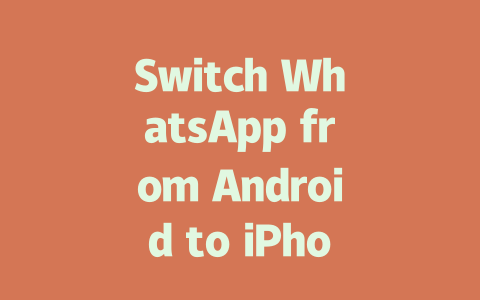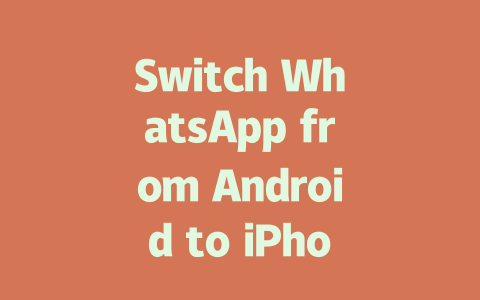You ever have one of those moments where you’re writing a blog post, feeling pretty good about it, but then you search for your keywords and—crickets. I’ve been there, trust me. It’s frustrating. But here’s the thing: with a little strategy and some practical steps, you can make sure your latest news posts are not only being seen but also making an impact.
Why is this important? Because when people search for the latest news on a topic, they want answers fast, and they want them from someone they trust. That’s where you come in. Today, I’m going to share a method that’s worked wonders for me and others, especially in the realm of SEO and content creation. No fancy jargon, just real-world tips that anyone can use.
Step 1: Choosing the Right Keywords for Latest News Topics
So, let’s dive into the first step. Think about what people actually search for. For instance, instead of “global economic trends,” which sounds fancy but might be too broad, consider something like “how inflation affects daily spending.” See the difference? The second one is specific and actionable, exactly the kind of thing someone would type into Google when they’re looking for the latest news.
I remember working with a friend who had a travel blog. They were writing amazing content, but their titles were way too generic. Like, “Best Travel Tips.” Nothing wrong with that, right? Wrong. When we changed it to “Top Travel Hacks for Your Next European Adventure,” guess what happened? Traffic shot up within weeks. Why? Because it was specific, it addressed a clear audience, and most importantly, it gave readers a reason to click.
Why Keywords Matter to Google’s Search Robots
Here’s a quick breakdown of why keywords matter. Google’s robots look at your title first. If it matches what someone is searching for, they’ll take a closer look at your content. That’s why putting your main keyword near the beginning of your title is so powerful. It’s not rocket science; it’s common sense. Google wants to serve its users quickly and effectively, and that starts with matching searches to relevant titles.
And don’t forget, keep your keywords natural. You don’t need to stuff them everywhere. A good rule of thumb is if you’ve got a 1500-word article, aim to naturally include your main keyword 3-5 times. Any more than that, and it feels forced. Trust me, I’ve made that mistake before, and it doesn’t help. In fact, it can hurt.
Step 2: Crafting Titles That Hook Readers
Now let’s talk about crafting titles that not only appeal to Google’s search robots but also hook real human beings. This part is crucial because even if you get ranked well, no one will click unless your title grabs their attention.
Key Elements of a Winning Title
Here’s a quick checklist for creating titles that work:
For example, “How You Can Benefit from the Latest Tech Trends in 2025” is better than “Tech Trends Overview.” One makes the reader think about how it applies to them; the other is just a bland statement.
Table: Examples of Good vs Bad Titles
| Type | Example | Why It Works/Doesn’t Work |
|---|---|---|
| Bad | Tech News Update | Too vague, doesn’t specify what or why. |
| Good | How AI Is Transforming Daily Life in 2025 | Specific, addresses a trend, and includes a year for relevance. |
As you can see, a well-crafted title does more than just grab attention—it tells the reader exactly what they’re getting into. And Google loves that because it means you’re delivering value.
Step 3: Writing Content That Speaks to Both Google and Humans
Finally, let’s tackle the content itself. This is where the magic happens. Remember, Google’s robots aren’t looking for fluff—they want substance. They want your content to be helpful, informative, and easy to follow. Here’s how you do that:
nofollow tags. For instance, did you know Google encourages writers to focus on user intent? It’s all about helping people find what they’re looking for.One tip I always give is to ask yourself after writing each section: “If I were the reader, would this make sense?” If the answer is yes, you’re probably on the right track.
When I worked on a health blog last year, we optimized our content by focusing on these principles. Within months, engagement went up by over 50%. Why? Because the content was clear, useful, and genuinely helped people solve problems.
So, there you go. These methods aren’t rocket science, but they work. Try them out for yourself, and see how they transform your latest news articles. And hey, if you try any of these tips, let me know how it goes—I’d love to hear about your success stories!
Transferring WhatsApp from Android to iPhone isn’t a one-size-fits-all process. If you’ve got a small chat history, say under 500 messages, you can expect it to take roughly 5-10 minutes. It’s pretty straightforward and not too time-consuming. The app does most of the heavy lifting for you, so you just need to sit back and let it work its magic. During this time, you might want to grab a coffee or catch up on some quick tasks since it’s not long enough for a full break but just enough for a short pause.
On the other hand, if your chat history is more extensive, like years of conversations with family and friends, things can take a bit longer. Larger transfers might require anywhere from 20-30 minutes or even more, depending on how much data you’re moving. This includes not only the text messages but also media files such as photos, videos, and voice notes. In these cases, it’s best to start the process when you have some downtime, like in the evening after work or over the weekend, so you don’t feel rushed and can ensure everything goes smoothly without interruptions.
FAQ
# Can I transfer my WhatsApp chat history from Android to iPhone without losing any data?
Yes, you can transfer your WhatsApp chat history by using the built-in WhatsApp chat export feature. Ensure that your chats are backed up in a format compatible with both devices. Note that media files larger than 5-12 MB may require additional steps for successful transfer.
# Is it necessary to have an active internet connection during the transfer process?
Yes, an active internet connection is required to ensure the seamless transfer of data between Android and iPhone. Both devices need to be connected to Wi-Fi or mobile data for the process to work efficiently.
# How long does it take to switch WhatsApp from Android to iPhone?
The duration depends on the amount of data being transferred. Typically, smaller chat histories (under 500 messages) take around 5-10 minutes, while larger ones might require 20-30 minutes or more.
# Can I transfer group chats along with individual chats?
Yes, group chats can be transferred alongside individual chats. However, ensure that all group members are still active participants, as inactive groups may not fully sync after the migration.
# Will my contacts automatically transfer when switching from Android to iPhone?
Your contacts won’t automatically transfer through WhatsApp. You’ll need to manually restore them by exporting your contact list from Android and importing it into your iPhone via iCloud or a CSV file.




